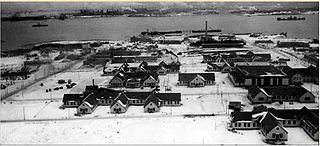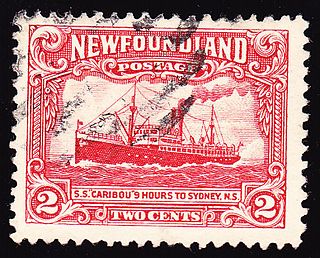Roger Sarty (born 27 September 1952 in Halifax, Nova Scotia) is among Canada's leading historians, specializing in the history of Canada's Navy and coastal defence.[ citation needed ]
Roger Sarty (born 27 September 1952 in Halifax, Nova Scotia) is among Canada's leading historians, specializing in the history of Canada's Navy and coastal defence.[ citation needed ]
Sarty was born and raised in Halifax, Nova Scotia before moving to Toronto in 1965. Sarty entered the University of Toronto, where he received his Bachelor of Arts degree in history. Going on to do graduate work, he earned a master's degree in history at Duke University, then returned to the University of Toronto where he received his Ph.D. in 1985 with a thesis entitled "Silent sentry: a military and political history of Canadian coast defence, 1860-1945".[ citation needed ]
Prior to 2004, Sarty was an important researcher involved with the Canadian War Museum in Ottawa.[ citation needed ]
In 2004 Sarty was appointed to a teaching position as a professor at Wilfrid Laurier University. At Wilfrid Laurier University, Sarty has helped numerous undergrad and graduate students achieve success in their academic journeys.[ citation needed ]
In 2005, he was additionally named chairman of the Council for Canadian Security in the 21st Century, an association based in Calgary. In 2007, he also became editor of The Northern Mariner , published by the Canadian Nautical Research Society in association with the North American Society for Oceanic History.[ citation needed ]
In 2002 he was awarded, with Brian Tennyson, the C.P. Stacey Prize for their book Guardian of the Gulf: Sydney, Cape Breton and the Atlantic Wars.[ citation needed ]

The Royal Canadian Navy is the naval force of Canada. The RCN is one of three environmental commands within the Canadian Armed Forces. As of 2023, the RCN operates 12 frigates, four attack submarines, 12 coastal defence vessels, eight patrol-class training vessels, two offshore patrol vessels, and several auxiliary vessels. The RCN consists of 8,400 Regular Force and 4,100 Primary Reserve sailors, supported by 3,800 civilians. Vice-Admiral Angus Topshee is the commander of the Royal Canadian Navy and chief of the Naval Staff.

Royal Canadian Navy base HMCS Protector, also known as the Point Edward Naval Base, was located next to Sydney Harbour, on Nova Scotia's Cape Breton Island. It was founded in 1940 and used by the navy during the Second World War. It was mainly used to provision, protect and repair the various merchant marine convoys to Quebec, Halifax, and the United Kingdom. It was a main combat zone during the Battle of the St. Lawrence and the more general Battle of the Atlantic. It continued to be utilized during the Cold War's early stages. It was decommissioned in 1964 and became the initial facility to house the Canadian Coast Guard College that same year. Currently, the Sydport Industrial Park utilizes the base's former piers and land.

SS Caribou was a Newfoundland Railway passenger ferry that ran between Port aux Basques, in the Dominion of Newfoundland, and North Sydney, Nova Scotia between 1928 and 1942. During the Battle of the St. Lawrence the ferry participated in thrice-weekly convoys between Nova Scotia and Newfoundland. A German submarine attacked the convoy on 14 October 1942 and Caribou was sunk. She had women and children on board, and many of them were among the 137 who died. Her sinking, and large death toll, made it clear that the war had really arrived on Canada's and Newfoundland's home front. Her sinking is cited by many historians as the most significant sinking in Canadian-controlled waters during the Second World War.

CGS Canada was a patrol vessel, sometimes referred to as a cruiser, in the Fisheries Protection Service of Canada, an enforcement agency that was part of the Department of Marine and Fisheries. Canada is considered to be the nucleus of the Royal Canadian Navy for her role in training Canadian naval officers and asserting Canadian sovereignty. Canada saw service in the First World War and was commissioned into the Royal Canadian Navy as HMCS Canada during that conflict. Following the war, the vessel was sold for commercial use and renamed MV Queen of Nassau. On the verge of being sold again, the ship sank in Straits of Florida on 2 July 1926.
Joseph Marc Milner, is a Canadian military and naval historian, author of several books including one novel. He is Director of the Gregg Centre for the Study of War and Society at the University of New Brunswick.
The SC convoys were a series of North Atlantic convoys that ran during the battle of the Atlantic during World War II.
At the onset of Confederation in 1867, political planners in Canada and Great Britain realized that Canada had substantial maritime interests to protect. Boasting the fourth largest Merchant Marine in the world, and deriving the majority of its foreign capital through maritime trading should have been enough to persuade the Canadian government of the strategic importance of the seas. Adding the fact that Canada was one of the great shipbuilding and ship-owning countries of the world, and it soon made the need for maritime protection obvious.

HMCS Amherst was a Flower-class corvette of the Royal Canadian Navy. She served primarily in the Battle of the Atlantic on convoy protection duty during the Second World War. She was named for Amherst, Nova Scotia. The ship was laid down at Saint John Dry Dock and Shipbuilding Co. Ltd. in Saint John, New Brunswick, on 23 May 1940 and launched on 3 December later that year. Amherst was commissioned on 5 August 1941 and served in the Battle of the Atlantic and Battle of the St. Lawrence, earning battle honours for both actions. After the war, the ship was decommissioned and sold to Venezuelan Navy in 1945 and renamed Carabobo. However, while en route to Venezuela, the ship was wrecked in the Gulf of St. Lawrence that same year.

HMCS Drummondville was a Bangor-class minesweeper that served with the Royal Canadian Navy during the Second World War. She saw action primarily in the Battle of the Atlantic. Entering service in 1941, she was sold for mercantile service after the war. In 1963, as Fort Albany, the ship was involved in a collision near Sorel, Quebec and sank. The ship was later raised and broken up.
HMCS Clayoquot was a Bangor-class minesweeper that served with the Royal Canadian Navy during the Second World War. She saw action mainly in the Battle of the Atlantic. She was sunk in 1944. The minesweeper was named after Clayoquot Sound on Vancouver Island, British Columbia.
HMCS Gananoque was a Bangor-class minesweeper constructed for the Royal Canadian Navy during the Second World War. Named for the town of Gananoque, Ontario situated on the Saint Lawrence River, the minesweeper entered service in 1941 and participated in the Battle of the Atlantic and the Battle of the Saint Lawrence, mainly as a convoy escort. Following the end of the war in 1945 Gananoque was decommissioned and placed in reserve. The vessel was reacquired in 1952, but never reentered service and was sold for scrap in 1959 and broken up.

HMCS Thunder was a Bangor-class minesweeper constructed for the Royal Canadian Navy during the Second World War. The minesweeper entered service in 1941 and took part in the Battle of the Atlantic and the invasion of Normandy. Following the war Thunder was sold for scrap and broken up.

HMCS Burlington was a Bangor-class minesweeper constructed for the Royal Canadian Navy during the Second World War. The minesweeper entered service in 1941 and took part in the Battle of the Atlantic and the Battle of the St. Lawrence as a convoy escort. The ship was decommissioned in 1945 and sold in 1946. The vessel was broken up for scrap in 1946.
HMCS Georgian was a Bangor-class minesweeper constructed for the Royal Canadian Navy during the Second World War. Primarily used as a convoy escort in the Battle of the Atlantic and the Battle of the St. Lawrence, the minesweeper had the misfortune of mistakenly sinking the British submarine HMS P514 off the coast of Newfoundland. Georgian also saw service in European waters, taking part in the invasion of Normandy. Following the war the ship was discarded and sold for scrap.
HMCS Mahone was a Bangor-class minesweeper constructed for the Royal Canadian Navy during the Second World War. Entering service in 1941, the ship took part in the Battle of the Atlantic and the Battle of the Saint Lawrence as a convoy escort. Following the war, the minesweeper was decommissioned and placed in reserve. Reacquired during the Korean War, Mahone was never recommissioned into the Royal Canadian Navy and was instead sold to the Turkish Navy in 1958. Renamed Beylerbeyi, the minesweeper remained in service until 1972 when she was discarded.
HMCS Canso was a Bangor-class minesweeper initially constructed for the Royal Navy during the Second World War. Transferred to the Royal Canadian Navy in 1942, the minesweeper saw service on both the West and East Coasts of Canada as a convoy escort and patrol vessel. The vessel participated in the invasion of Normandy and spent the final years of the war in European waters. Canso was returned to the Royal Navy following the war and was broken up for scrap in 1948.

HMCS Caraquet was a Bangor-class minesweeper initially constructed for the Royal Navy during the Second World War. Transferred to the Royal Canadian Navy in 1942, the vessel served on both coasts of Canada and took part in the Battle of the Atlantic as a convoy escort and the invasion of Normandy. Following the war, the minesweeper was returned to the United Kingdom who then sold the ship to the Portuguese Navy in 1946. Renamed Almirante Lacerda, the vessel was used as a survey ship until 1975 when it was discarded.
HMCS Ingonish was a Bangor-class minesweeper initially constructed for the Royal Navy during the Second World War. Loaned to the Royal Canadian Navy in 1942, the vessel served on both coasts of Canada as a convoy escort and patrol vessel. Following the war, the minesweeper was returned to the Royal Navy and laid up. Ingonish was discarded in 1948.
HMCS Swift Current was a Bangor-class minesweeper that served with the Royal Canadian Navy during the Second World War. Entering service in 1941, the warship used as a training ship and convoy escort and took part in the battles of the St. Lawrence and the Atlantic. Following the war the ship was laid up until reacquired during the Korean War. Never re-entering service with Canada, Swift Current was sold to the Turkish Navy in 1958. Renamed Bozcaada, the minesweeper was discarded in 1971.